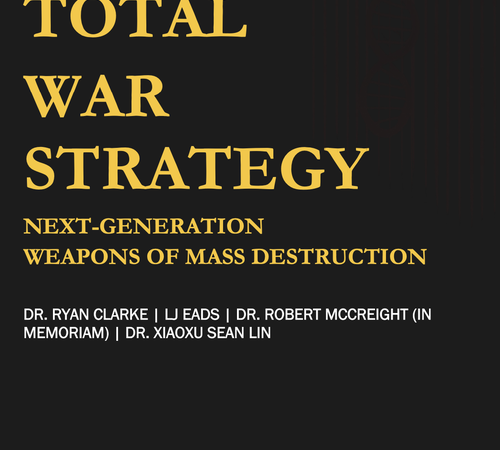The Ethical Implications of Nanotechnology in Modern Warfare: Balancing Benefits and Risks


Nanotechnology has been a rapidly evolving field in recent years, with numerous applications in various fields, including medicine, electronics, and materials science. However, one of the most controversial applications of nanotechnology has been in the field of modern weaponry. The development of nanotechnology has the potential to transform the landscape of modern warfare, with both benefits and risks. In this article, we will explore the current state of nanotechnology in modern weaponry, the potential benefits and risks, and the ethical considerations surrounding its use.
Nanotechnology has the potential to revolutionize modern weaponry in several ways. For instance, nanotechnology can be used to create more powerful and efficient weapons. Nanomaterials can be engineered to have unique mechanical, thermal, and optical properties, which can be used to create new types of weapons. For example, carbon nanotubes can be used to create lighter and stronger body armor, while nanoscale explosives can be used to create more powerful and efficient explosives.
Nanotechnology can also be used to improve the accuracy and effectiveness of weapons. For example, nanosensors can be used to detect the presence of chemical, biological, or radiological agents in the environment, which can be used to develop more effective defensive and offensive strategies. Additionally, nanoscale coatings can be applied to weapons to improve their durability, corrosion resistance, and stealth capabilities.
However, the development of nanotechnology in modern weaponry also presents significant risks and challenges. One of the biggest risks is the potential for unintended consequences. Nanoparticles are known to be highly reactive and can interact with biological systems in unpredictable ways. For example, nanomaterials can enter the body through inhalation, ingestion, or absorption through the skin, and can potentially cause damage to the cells and tissues of the body.
Another risk associated with the development of nanotechnology in modern weaponry is the potential for environmental contamination. Nanoparticles are known to have a high surface area to volume ratio, which can make them highly reactive and prone to aggregation. This can lead to the accumulation of nanoparticles in the environment, potentially leading to ecological damage and adverse health effects.
There are also ethical considerations surrounding the use of nanotechnology in modern weaponry. For example, there is the potential for nanotechnology to be used to develop weapons that can target specific ethnic or genetic populations, leading to discrimination and human rights violations. Additionally, there is the potential for nanotechnology to be used in a way that is inconsistent with the principles of just war, such as by using weapons that cause unnecessary suffering or that target civilians.
Despite these risks and challenges, the development of nanotechnology in modern weaponry continues to progress. The use of nanotechnology in modern weaponry is not only limited to military applications but also includes the development of law enforcement tools. For example, nanosensors can be used to detect drugs and explosives at airports, while nanomaterials can be used to create more effective and durable riot gear for police officers.
In order to mitigate the risks and ethical concerns associated with the use of nanotechnology in modern weaponry, it is important to establish clear guidelines and regulations for its use. These guidelines should be based on a comprehensive understanding of the potential risks and benefits of nanotechnology and should be designed to ensure that its use is consistent with ethical principles and international laws and norms.
One potential benefit of using nanotechnology in modern weaponry is that it could make weapons more efficient and effective. Nanotechnology can be used to create new types of weapons, such as nanoscale explosives, which can be more powerful and efficient than conventional explosives. Additionally, the use of nanomaterials in body armor could create lighter and stronger armor, allowing military personnel to move more easily while still being protected.
Another potential benefit of using nanotechnology in modern weaponry is that it could lead to improved accuracy and precision. Nanosensors can detect the presence of chemicals, biological agents, or radiation in the environment, which can help military personnel identify potential threats more easily. Additionally, the use of nanotechnology in targeting systems could improve the accuracy of weapons, leading to fewer casualties and less collateral damage.
However, the use of nanotechnology in modern weaponry also presents significant risks and challenges. One potential risk is the potential for unintended consequences. Nanoparticles are highly reactive and can interact with biological systems in unpredictable ways. For example, nanoparticles can enter the body through inhalation, ingestion, or absorption through the skin, and can potentially cause damage to cells and tissues.
Another risk associated with the use of nanotechnology in modern weaponry is the potential for environmental contamination. Nanoparticles are known to have a high surface area to volume ratio, which can make them highly reactive and prone to aggregation. This can lead to the accumulation of nanoparticles in the environment, potentially leading to ecological damage and adverse health effects.
There are also ethical concerns surrounding the use of nanotechnology in modern weaponry. For example, there is the potential for nanotechnology to be used to develop weapons that can target specific ethnic or genetic populations, leading to discrimination and human rights violations. Additionally, the use of nanotechnology in weaponry could be inconsistent with the principles of just war, such as by using weapons that cause unnecessary suffering or that target civilians.
Despite these risks and challenges, the use of nanotechnology in modern weaponry is likely to continue to evolve. In addition to military applications, nanotechnology is also being used to develop law enforcement tools. For example, nanosensors can be used to detect drugs and explosives at airports, while nanomaterials can be used to create more effective and durable riot gear for police officers.
To address the risks and ethical concerns associated with the use of nanotechnology in modern weaponry, it is important to establish clear guidelines and regulations for its use. These guidelines should be based on a comprehensive understanding of the potential risks and benefits of nanotechnology and should be designed to ensure that its use is consistent with ethical principles and international laws and norms.
In conclusion, the use of nanotechnology in modern weaponry presents a complex set of challenges that require careful consideration. While it has the potential to make weapons more powerful and efficient, it also poses risks to human health and the environment, as well as ethical concerns about discrimination and unjust warfare. As the development of nanotechnology continues to evolve, it is critical to establish clear guidelines and regulations to ensure its use is consistent with international laws and ethical principles. Ultimately, the responsible and ethical use of nanotechnology in modern weaponry will require a thoughtful and balanced approach that takes into account both the benefits and the risks.
To achieve this balance, it is essential for policymakers, scientists, and other stakeholders to engage in ongoing dialogue about the implications of nanotechnology in modern weaponry. This conversation should include not only the potential benefits and risks, but also the broader ethical and societal implications of this technology. It is important to consider how the use of nanotechnology in modern weaponry may impact the relationship between nations, the treatment of non-combatants, and the overall perception of warfare.
Additionally, as the development of nanotechnology in modern weaponry continues to progress, it is essential to invest in research that explores the potential risks and develops strategies to mitigate them. This research should be conducted in a transparent and collaborative manner, with input from a diverse range of experts, including scientists, ethicists, military personnel, and community representatives.
Ultimately, the responsible and ethical use of nanotechnology in modern weaponry will require ongoing vigilance and adaptation to ensure that its benefits are maximized and its risks are minimized. By engaging in an open and informed dialogue about the implications of this technology, and by investing in research to better understand its potential risks and benefits, we can work to ensure that the development and deployment of nanotechnology in modern weaponry is consistent with our highest ethical and moral principles.



